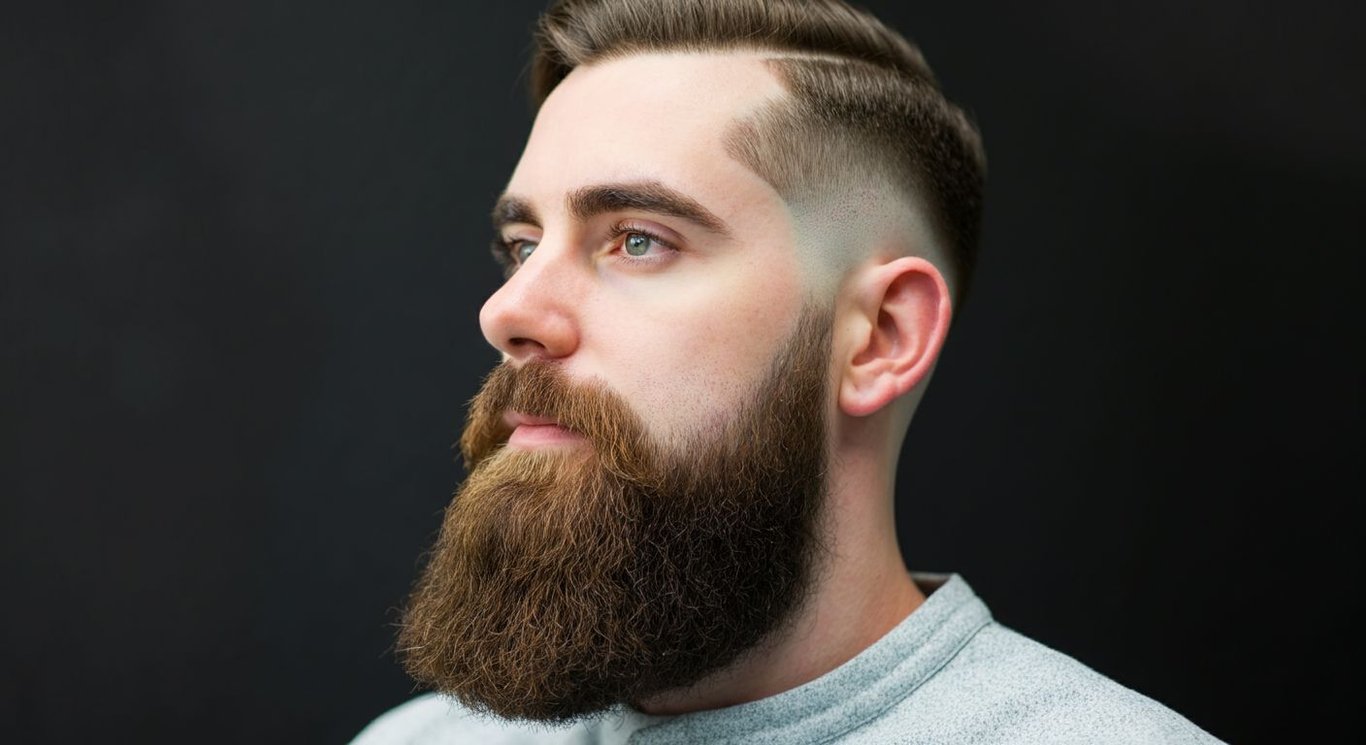Beard Transplant: Sculpt Your Dream Facial Hairline
Discover how you can achieve your ideal facial hair with our comprehensive guide to beard transplants.
Growing a beard is more than just letting facial hair grow. For some, achieving the dream beard requires a little bit of help. Whether it's due to genetics, scarring, or thinning hair, beard transplants are becoming an increasingly popular solution for those looking to enhance their facial hair. This ultimate guide will walk you through everything you need to know about beard transplants, from what they involve to how to achieve natural-looking results.
Facial Hair Transplant: Is It Right for You?
Facial hair transplants can be life-changing for individuals seeking a fuller beard. These procedures are best suited for those who have patchy beards, noticeable scars, or areas where facial hair won't grow due to genetics. Candidates should be in good general health and have a sufficient amount of donor hair, typically taken from the back or sides of the scalp. It's crucial to consult with a qualified specialist who can assess your unique needs. Explore whether this procedure is appropriate for your facial profile, and understand the potential results and expectations.
Determining Candidacy for a Facial Hair Transplant
Deciding if a beard transplant is right for you involves several considerations. Ideal candidates often have realistic expectations about what the procedure can achieve. For example, someone looking to fill in a sparse beard to achieve a more uniform look is a better candidate than someone expecting a complete transformation of their facial appearance. The success of a facial hair transplant largely depends on the availability and quality of donor hair, commonly harvested using follicular unit extraction beard techniques.
Factors Affecting Your Candidacy
- Hair Density: Adequate donor hair density on the scalp is essential. A consultation will assess whether you have enough suitable hair for grafting onto the face.
- General Health: Good overall health is critical for undergoing any surgical procedure. Conditions such as uncontrolled diabetes or certain skin disorders may affect your eligibility for a facial hair transplant.
- Realistic Expectations: Understanding the limitations and potential outcomes of the procedure is important. The goal is to enhance your natural features and achieve a more balanced look, not create a completely different appearance.
Before undergoing a facial hair transplant, it's important to consider what you hope to achieve and discuss this extensively with your estethica surgeon. For instance, if you're seeking to cover scars from acne or injury, understand that while the transplant can significantly improve the aesthetic, some texture differences may still be noticeable. For individuals interested in the long-term effects of facial hair transplants, consider its suitability based on individual hair growth patterns and overall health.

Beard Restoration Techniques: FUE vs. DHI
Two leading techniques for beard transplants are Follicular Unit Extraction (FUE) and Direct Hair Implantation (DHI). FUE involves excising follicles from the donor area and transplanting them to the beard area, usually leading to quicker recovery and minimal scarring. On the other hand, DHI uses a Choi pen which places hair directly, giving the doctor more control over the angle and density. Each technique has its benefits and potential drawbacks, and your choice may depend on the desired outcome and professional recommendation. Understanding their differences will help ensure you choose the best option for achieving a natural and dense beard.
Comparing FUE and DHI Methods for Beard Transplants
When weighing FUE against DHI for a facial hair transplant, consider the subtle nuances of each. FUE generally allows for harvesting a larger number of grafts, which can be beneficial if extensive coverage is needed. DHI, with its specialized Choi pen, is known for precision in graft placement, enabling a higher survival rate of transplanted follicles. This can be critical in achieving a specific beard style or density. Ultimately, the best approach hinges on your distinct facial structure, hair characteristics, and desired density, which makes a consultation with an estethica specialist vital.
Advantages of Each Technique for Facial Hair Restoration
- FUE Benefits: FUE offers versatility in graft selection, allowing surgeons to choose the thickest and healthiest hairs to maximize beard density. This technique is often preferred when dealing with significant gaps in beard growth or covering large areas, ensuring a natural-looking outcome.
- DHI Advantages: With DHI, grafts are implanted almost immediately after extraction, reducing the time follicles are outside the body and potentially increasing survival rates. The Choi pen offers exceptional control over the angle and depth of implantation, assisting in mimicking natural hair direction and preventing unnatural growth patterns.
- Customized Approach: Skilled surgeons at estethica will assess the patient's hair type, facial structure, and desired beard style to determine whether FUE or DHI is most suitable. This personalized strategy ensures that the chosen method aligns with the patient's unique needs, optimizing the final outcome of the beard transplant.
Both FUE and DHI techniques offer unique benefits for enhancing facial hair through a beard restoration. Success largely depends on the expertise of the surgical team and a careful evaluation of individual patient characteristics. estethica's commitment to personalized care ensures that each patient receives the most appropriate and effective treatment for achieving a natural and well-defined beard.

Beard Transplant: What to Expect Before & After
Before the procedure, your specialist will provide instructions on how to prepare, which may include avoiding certain medications or substances. The procedure itself can take several hours, depending on the extent of the transplant. Post-surgery, expect some redness and swelling, but these symptoms should subside within a few days. You’ll typically see the full results within 3 to 4 months, as the new beard hair continues to grow. It's important to follow aftercare advice diligently to ensure the best possible results and to attend follow-up appointments as scheduled.
Navigating the Beard Transplant Journey
Embarking on a beard transplant journey with estethica involves several key stages, each designed to maximize the success and satisfaction of the procedure. Initially, a comprehensive consultation helps determine the feasibility and expected outcomes of the transplant, tailored to your specific facial structure and desired beard density. Understanding each phase ensures that patients are well-prepared and have realistic expectations about the transformation.
Essential Steps in Beard Transplant Procedure
- Pre-operative Preparation: Prior to the transplant, it's crucial to follow your estethica surgeon's guidelines, which include refraining from alcohol and blood-thinning medications to minimize complications.
- During the Procedure: The transplant, whether FUE or DHI, involves meticulous extraction and implantation of hair follicles. The duration varies, but typically ranges from four to eight hours, depending on the coverage area.
- Post-operative Care: After the procedure, adhere strictly to the aftercare protocol, which involves gentle cleaning, application of prescribed ointments, and avoiding direct sun exposure to promote optimal healing of your beard transplant.
The process from initial consultation to full beard growth at estethica is a carefully managed journey. By carefully following the advice from estethica specialists, you ensure the best possible outcome for your beard.

Achieving Natural-Looking Results: Beard Density & Design
The key to a successful beard transplant lies in achieving natural-looking density and design. Surgeons aim to replicate the natural angles and distribution of your beard hair, paying close attention to the direction of your hair growth to ensure seamless integration with existing hair. It's also essential to set realistic expectations regarding beard density—it may take multiple procedures to reach the desired thickness. Trusting skilled specialists and using cutting-edge techniques are crucial to achieving the most natural appearance possible.
Optimizing Beard Density for a Natural Look
Achieving a natural look during a beard transplant involves several strategic approaches. Firstly, the precise matching of donor hair texture and color to existing facial hair is essential. For example, coarse scalp hair might not be suitable for the entire beard, but could be used strategically in areas requiring significant density. Secondly, the angle and direction of implanted hair must mimic natural growth patterns, which vary across different areas of the beard. At estethica, surgeons use meticulous techniques to ensure each graft is placed in a way that complements the patient's natural beard structure.
Key Strategies for Achieving Natural Beard Density
- Strategic Graft Placement: This involves carefully placing grafts to replicate the natural density variations in different areas of the beard, crucial for delivering a natural look. For example, using single-hair grafts along the hairline and denser packs in the core areas of the beard can enhance the aesthetic outcome.
- Matching Hair Characteristics: Careful selection of donor hair based on thickness, color, and texture ensures harmony with the recipient's existing facial hair. This helps in avoiding a stark contrast that could make the transplant look artificial.
- Considering Facial Symmetry: Achieving symmetry is vital for an aesthetically pleasing beard transplant. Surgeons assess facial structure to ensure the transplanted beard complements the individual's unique features.
Creating a natural-looking beard goes beyond simply adding hair; it requires artistic skill and a detailed understanding of facial aesthetics. Here's how to ensure your transplanted beard looks authentic and integrates well with your overall appearance:
Factors Influencing the Natural Appearance of Beard Transplants
- Skill of the Surgeon: An experienced surgeon understands the nuances of hair placement and density required to achieve a natural-looking beard. Their expertise is pivotal in minimizing the risk of unnatural patterns.
- Advanced Techniques: Techniques such as DHI allow for precise control over graft placement. The use of such cutting-edge methods ensure a seamless and natural integration of the transplanted hair.
- Realistic Expectations: Understanding the limitations of the procedure and having realistic expectations about the outcome are important for satisfaction. It's essential to discuss what can realistically be achieved to match your natural hair growth and facial features.
Precision Beard Restoration Through FUE and DHI Techniques
estethica employs Follicular Unit Extraction (FUE) and Direct Hair Implantation (DHI) for beard transplants, ensuring personalized treatment plans. FUE allows surgeons to select the thickest, healthiest hairs to maximize beard density, while DHI utilizes the Choi pen for precise graft placement, increasing follicle survival rates and mimicking natural hair direction.
estethica's surgeons possess extensive experience in facial hair restoration, carefully assessing each patient's hair type, facial structure, and desired beard style to determine the most suitable technique. This personalized approach ensures that the chosen method aligns with the patient's unique needs, optimizing the final outcome of the beard transplant.
Comprehensive Patient Journey and Aftercare Support
estethica provides a comprehensive beard transplant journey, from initial consultation to post-operative care, ensuring patient satisfaction and optimal results. The clinic’s aftercare protocol includes gentle cleaning, application of prescribed ointments, and avoidance of direct sun exposure to promote optimal healing.
Patients at estethica benefit from personalized treatment plans based on individual needs and goals. The expert surgical teams carefully manage each stage—from pre-operative preparation to meticulous extraction and implantation of hair follicles—to maximize the success and aesthetic outcome of the beard transplant.
Frequently Asked Questions
Who is an ideal candidate for a beard transplant?
What are the main differences between FUE and DHI beard restoration techniques?
What can I expect during the recovery period after a beard transplant?
How is natural-looking beard density achieved with a facial hair transplant?
What factors influence the success of a follicular unit extraction beard procedure?
Ready to discover your healthiest, most beautiful self with estethica's expert guidance?
📞 Call Now for Your Free Consultation!